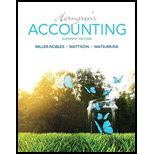
1)
Introduction:
Classes of shares:
• Shares provide partial ownership or a “share” of a corporation. There are two primary classes of shares – Equity
• Equity shares are the class of shares which carry voting rights and equity share holders are the true owners of the company as in the event of dissolution, equity shareholders get last preference in clearing the amounts invested and there is no guarantee of profits will be debited by dividend on an annual basis.
• Preference shares are the class of shares which do not carry voting rights and in the event of dissolution, preference shareholders get first preference in clearing the amounts invested and there is usually guarantee of profits will be debited by dividend on an annual basis.Convertible Preference shares are preference shares that carry the option to be converted into equity shares after certain duration.
Journal Entries
- Journal entries are the first step in recording financial transactions and preparation of financial statements.
- These represent the impact of the financial transaction and demonstrate the effect on the accounts impacted in the form of debits and credits.
- Assets and expenses have debit balances and Liabilities and Incomes have credit balances and according to the business transaction, the accounts are appropriately debited will be credited by credited to reflect the effect of business transactions and events.
To Prepare:
Record of transactions in
2)
Introduction:
Statement of
• An essential element of the
• When shares are issued, the par value is recorded in the Paid in capital account and if shares are issued at a price greater than the par value, they are said to be issued at a premium. This premium on issue is recorded in the Excess of Paid in Capital over Par value account.
• Retained earnings are the balance of net income for the period after deduction of operating and revenue expenses.
To Prepare:
Statement of Stockholders equity
Want to see the full answer?
Check out a sample textbook solution
Chapter 13 Solutions
Horngren's Accounting (11th Edition)
- What was the company net operating income?arrow_forwardFischer Corporation requires sales of $3,000,000 to cover its fixed costs of $1,200,000 and to earn a net income of $800,000. What percent are variable costs of sales?arrow_forwardA company had an accounts receivable balance of $600,000 at the beginning of the year and $720,000 at the end of the year. Net credit sales during the year were $5,400,000. What was the average collection period of the receivables in terms of days?arrow_forward
- A company has the following credit sales data: . July: $8,000 August: $11,000 September: $14,000 Credit sales are collected as follows: 70% in the month of sale 30% in the following month What is the estimated cash received from credit sales for September?arrow_forwardTimberline Manufacturing has an inventory turnover of 95 days, an accounts payable turnover of 65 days, and an accounts receivable turnover of 78 days. What is Timberline Manufacturing's cash conversion cycle?arrow_forwardFinancial Accounting Question please answerarrow_forward

 AccountingAccountingISBN:9781337272094Author:WARREN, Carl S., Reeve, James M., Duchac, Jonathan E.Publisher:Cengage Learning,
AccountingAccountingISBN:9781337272094Author:WARREN, Carl S., Reeve, James M., Duchac, Jonathan E.Publisher:Cengage Learning, Accounting Information SystemsAccountingISBN:9781337619202Author:Hall, James A.Publisher:Cengage Learning,
Accounting Information SystemsAccountingISBN:9781337619202Author:Hall, James A.Publisher:Cengage Learning, Horngren's Cost Accounting: A Managerial Emphasis...AccountingISBN:9780134475585Author:Srikant M. Datar, Madhav V. RajanPublisher:PEARSON
Horngren's Cost Accounting: A Managerial Emphasis...AccountingISBN:9780134475585Author:Srikant M. Datar, Madhav V. RajanPublisher:PEARSON Intermediate AccountingAccountingISBN:9781259722660Author:J. David Spiceland, Mark W. Nelson, Wayne M ThomasPublisher:McGraw-Hill Education
Intermediate AccountingAccountingISBN:9781259722660Author:J. David Spiceland, Mark W. Nelson, Wayne M ThomasPublisher:McGraw-Hill Education Financial and Managerial AccountingAccountingISBN:9781259726705Author:John J Wild, Ken W. Shaw, Barbara Chiappetta Fundamental Accounting PrinciplesPublisher:McGraw-Hill Education
Financial and Managerial AccountingAccountingISBN:9781259726705Author:John J Wild, Ken W. Shaw, Barbara Chiappetta Fundamental Accounting PrinciplesPublisher:McGraw-Hill Education





